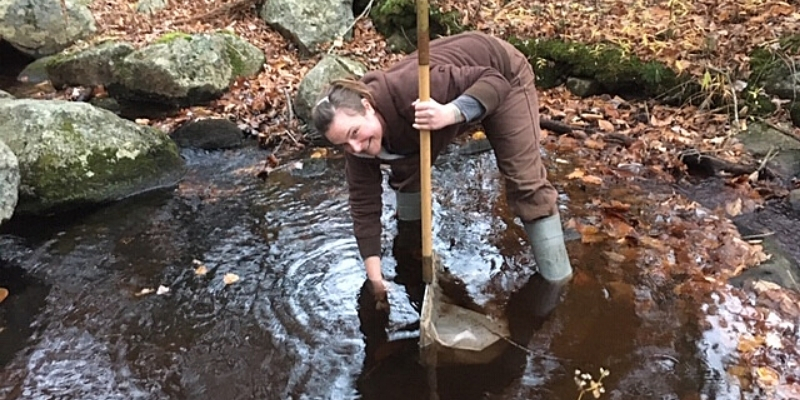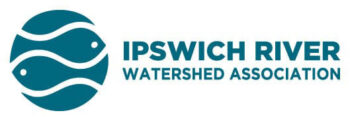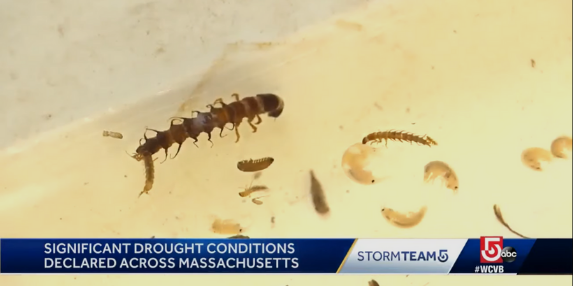Volunteers are needed to collect data on the Ipswich River of the current severe drought on river life. As the image above shows, low flows in critical habitat areas damage the river’s macroinvertebrate populations.
The Macroinvertebrate Monitoring volunteer program is returning this fall and we are seeking volunteers. You can increase your and our knowledge of river life (and the River’s health) by taking part. An outdoor training event will be held at the Willowdale Mill Reservation on Saturday, October 3rd from 10am-12pm.
Among the various living things that call the Ipswich River home are macroinvertebrates, which include many different types of insects and other small creatures that live among the rocks beneath the surface of the water. To put it simply, bugs.
We monitor macroinvertebrates each fall by sampling shallow riffle areas in the Ipswich River and many smaller streams. Riffle areas are good places to look for these organisms since the rocks provide hiding places while creating a stirring action that enriches the water with oxygen. Riffles are already shallow, so they are often the first parts of a river to dry up. Unlike fish, macroinvertebrates cannot move away and seek refuge in pools. When riffles dry up, the macroinvertebrate community may not fully recover even when flows return.
Most of New England is experiencing a significant drought this summer. As shown in the video below, the Ipswich River, like many others, is in a severe drought. The situation worsens with every rainless day. Droughts are becoming increasingly common in our region, with a severe drought occurring across much of the state in 2016. We know from observations that the 2016 drought was very impactful to living organisms in the Ipswich River, so we are concerned about what the predictions of increased drought and record temps mean for the River’s future.
Though small, macroinvertebrates are a vital part of a river’s food web, which means their presence, or absence, has a big impact on river health. Compared to prior years, data shows a decline in macroinvertebrate abundance occurred following the 2016 drought. The volunteer-collected samples showed also observed a decline in the numbers of mayflies and stoneflies. These are the most sensitive types of macroinvertebrates and are the first to disappear when there is a problem.
Mayflies and stoneflies are uncommon in the Ipswich River, as well as streams like Martins Brook, where low flows are a familiar problem, but we do find them in Gravelly Brook. Protected by Willowdale State forest, this tributary saw an increase in the number of mayflies and stoneflies from 2017 to 2019, but the latest drought could pose yet another setback. Gravelly Brook is an example that recovery is possible where we take steps to protect the river and its surroundings. Water conservation and greenscapes (environmentally friendly landscaping) practices are all tools we can use to defend our waterways.
Volunteers interested in helping with macroinvertebrate monitoring, sampling, and identification should fill out our volunteer inquiry form and indicate in this program. No experience is needed, but having waders is helpful. Over the course of the following weeks, we will coordinate with volunteers to borrow the sampling equipment and go to monitoring sites across the region. We look forward to seeing you there!


